Abstract
The survival of virus present in secondary effluents discharged into a cypress dome was studied. Isolations were made from concentrates of water drawn from 10-foot (304.80 cm) deep wells. Data presented show vertical and lateral virus movement as well as survival within the dome for 28 days during a period of heavy rains when no effluent was being applied. Due to the inefficiency of virus concentration procedures, it is proposed that much of the virus present was probably not demonstrated. A rapid, relatively inexpensive concentration technique for sewage influents and effluents is discussed.
Full text
PDF
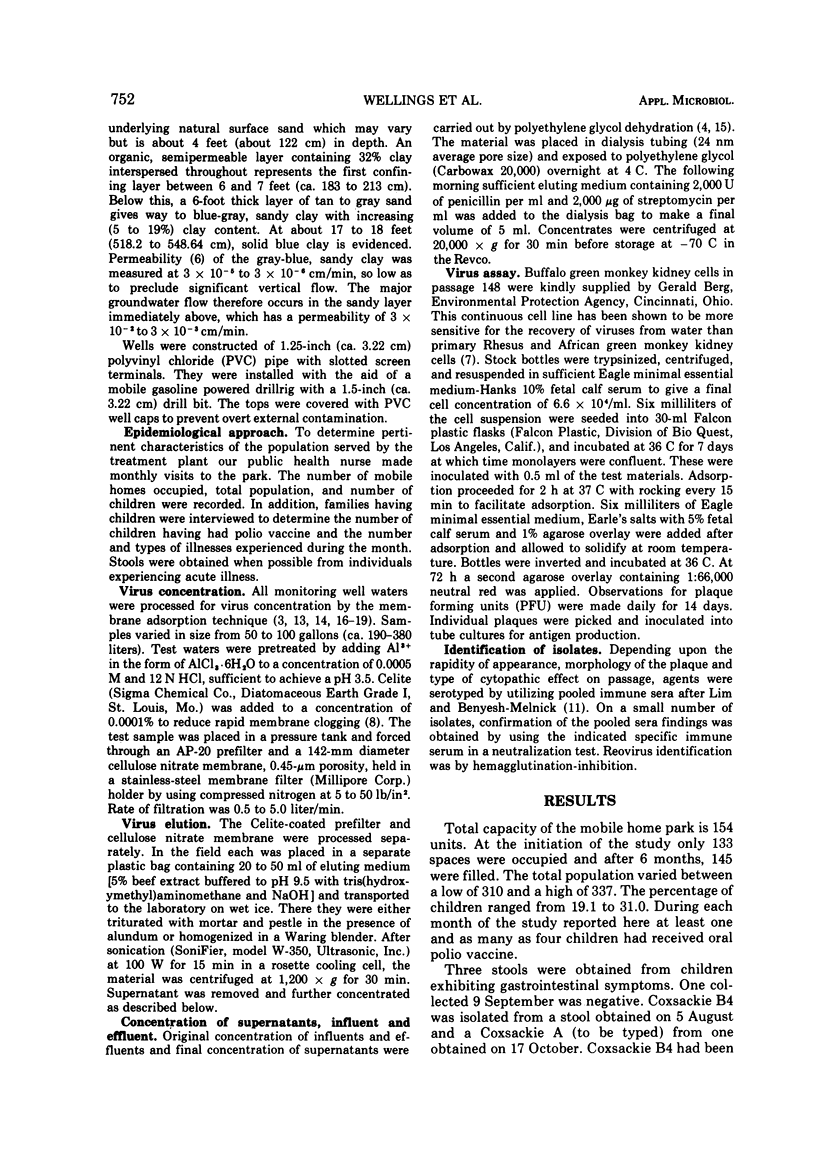
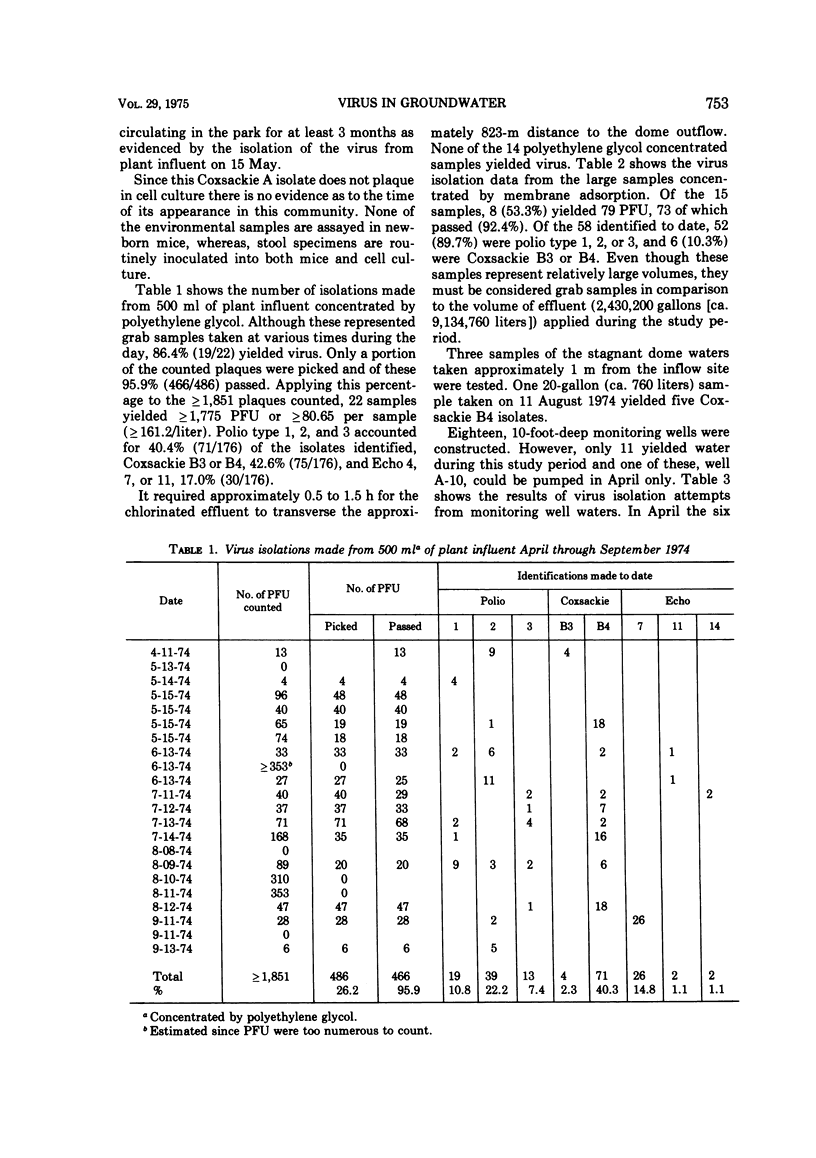
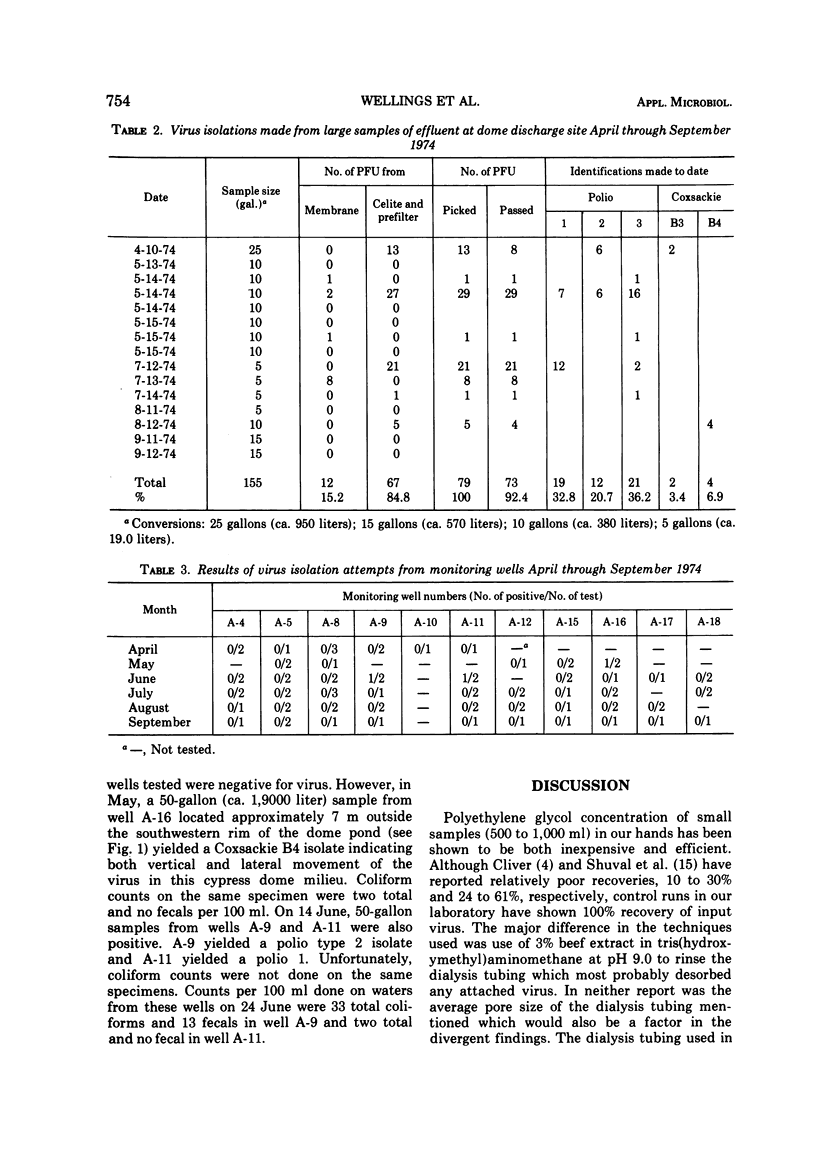

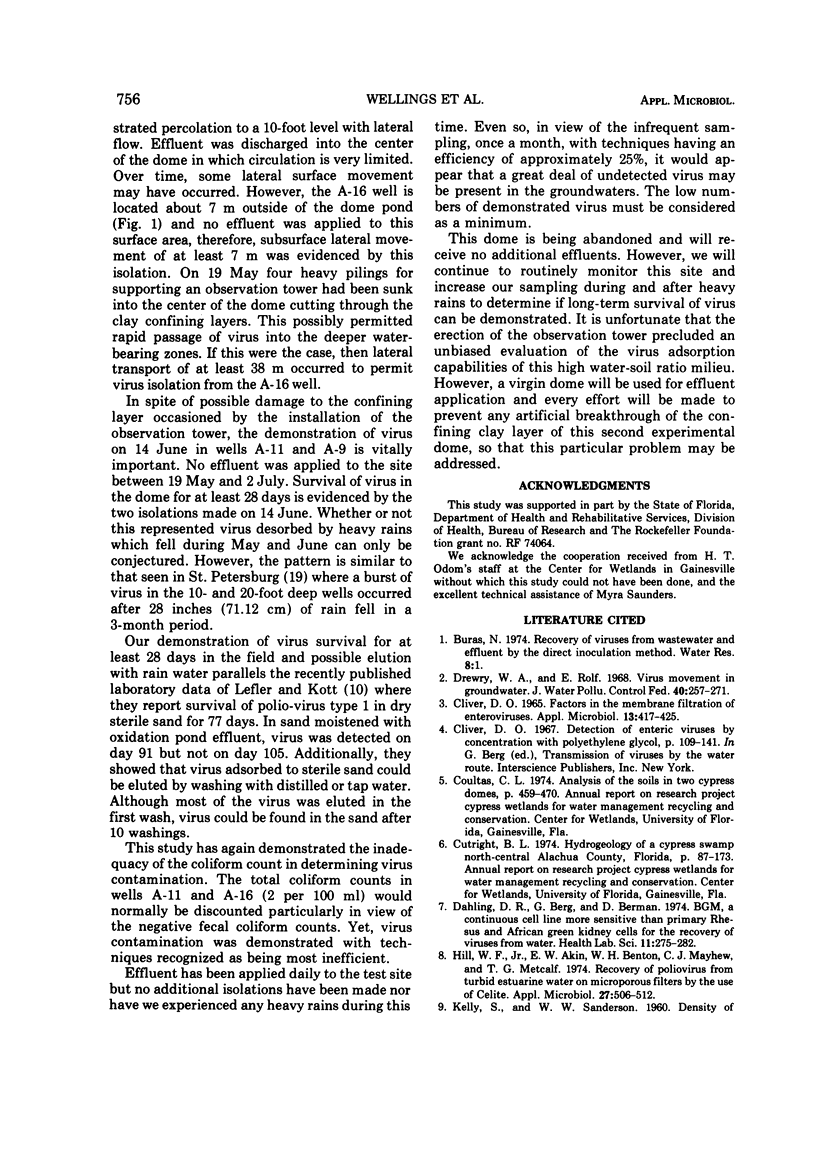
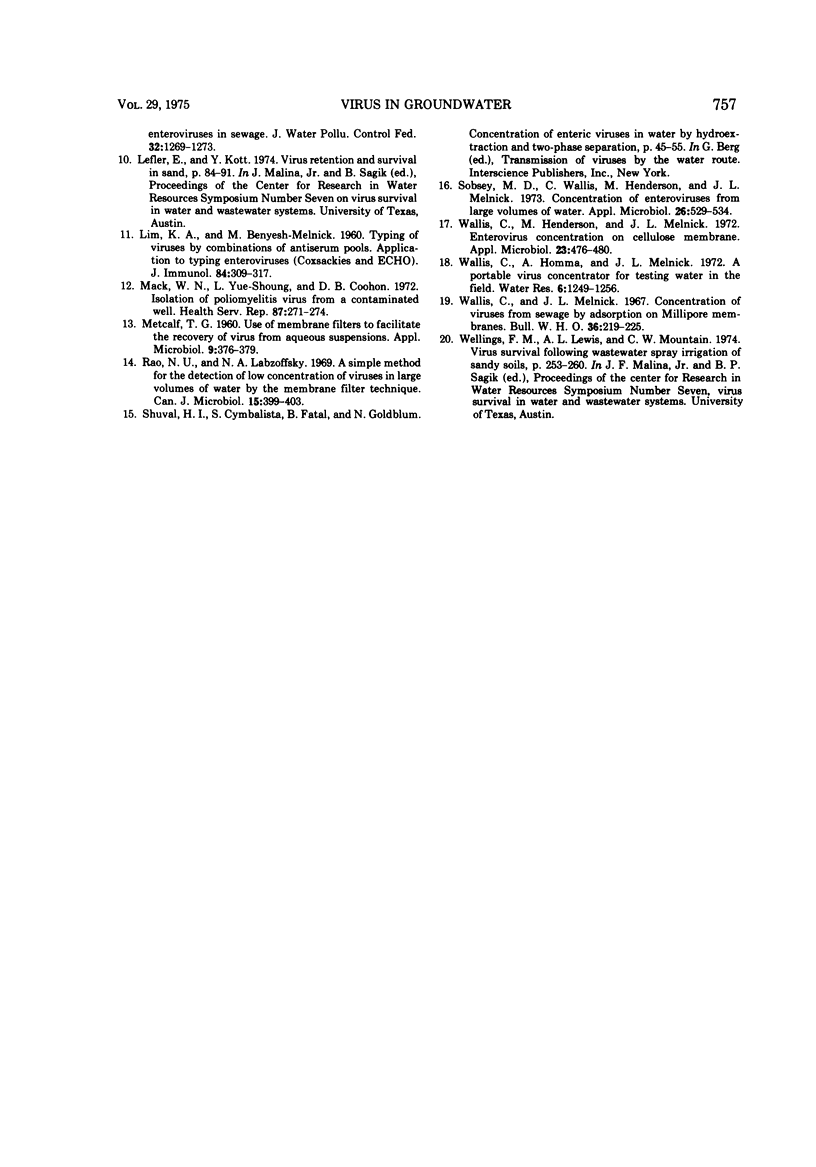
Selected References
These references are in PubMed. This may not be the complete list of references from this article.
- CLIVER D. O. FACTORS IN THE MEMBRANE FILTRATION OF ENTEROVIRUSES. Appl Microbiol. 1965 May;13:417–431. doi: 10.1128/am.13.3.417-425.1965. [DOI] [PMC free article] [PubMed] [Google Scholar]
- Dahling D. R., Berg G., Berman D. BGM, a continuous cell line more sensitive than primary rhesus and African green kidney cells for the recovery of viruses from water. Health Lab Sci. 1974 Oct;11(4):275–282. [PubMed] [Google Scholar]
- Drewry W. A., Eliassen R. Virus movement in groundwater. J Water Pollut Control Fed. 1968 Aug;(Suppl):257–271. [PubMed] [Google Scholar]
- Hill W. F., Jr, Akin E. W., Benton W. H., Mayhew C. J., Metcalf T. G. Recovery of poliovirus from turbid estuarine water on microporous filters by the use of celite. Appl Microbiol. 1974 Mar;27(3):506–512. doi: 10.1128/am.27.3.506-512.1974. [DOI] [PMC free article] [PubMed] [Google Scholar]
- LIM K. A., BENYESH-MELNICK M. Typing of viruses by combinations of antiserum pools. Application to typing of enteroviruses (Coxsackie and ECHO). J Immunol. 1960 Mar;84:309–317. [PubMed] [Google Scholar]
- METCALF T. G. Use of membrane filters to facilitate the recovery of virus from aqueous suspensions. Appl Microbiol. 1961 Sep;9:376–379. doi: 10.1128/am.9.5.376-379.1961. [DOI] [PMC free article] [PubMed] [Google Scholar]
- Mack W. N., Lu Y. S., Coohon D. B. Isolation of poliomyelitis virus from a contaminated well. Health Serv Rep. 1972 Mar;87(3):271–274. [PMC free article] [PubMed] [Google Scholar]
- Rao N. U., Labzoffsky N. A. A simple method for the detection of low concentration of viruses in large volumes of water by the membrane filter technique. Can J Microbiol. 1969 May;15(5):399–403. doi: 10.1139/m69-071. [DOI] [PubMed] [Google Scholar]
- Sobsey M. D., Wallis C., Henderson M., Melnick J. L. Concentration of enteroviruses from large volumes of water. Appl Microbiol. 1973 Oct;26(4):529–534. doi: 10.1128/am.26.4.529-534.1973. [DOI] [PMC free article] [PubMed] [Google Scholar]
- Wallis C., Henderson M., Melnick J. L. Enterovirus concentration on cellulose membranes. Appl Microbiol. 1972 Mar;23(3):476–480. doi: 10.1128/am.23.3.476-480.1972. [DOI] [PMC free article] [PubMed] [Google Scholar]
- Wallis C., Melnick J. L. Concentration of viruses from sewage by adsorption on millipore membranes. Bull World Health Organ. 1967;36(2):219–225. [PMC free article] [PubMed] [Google Scholar]


